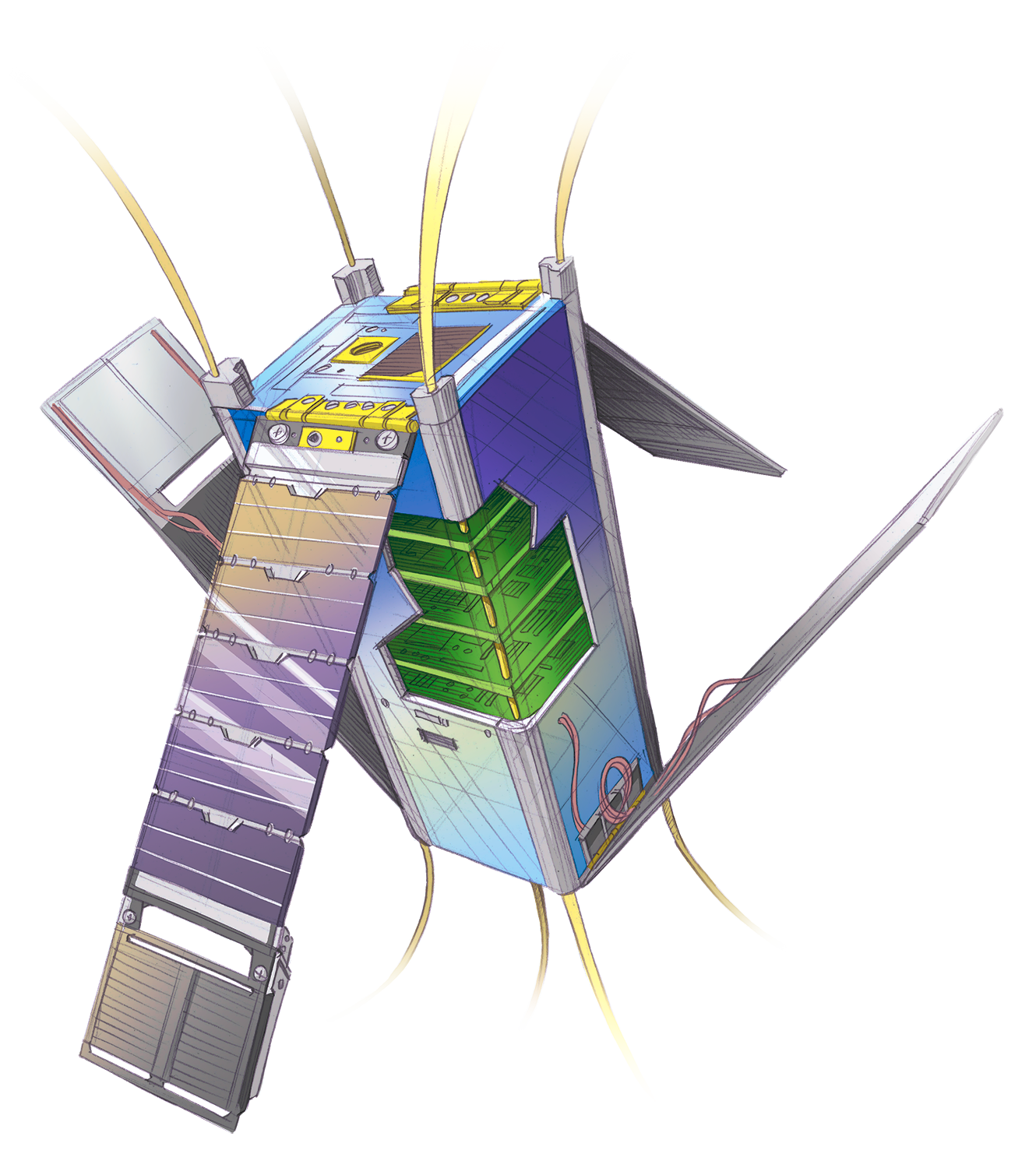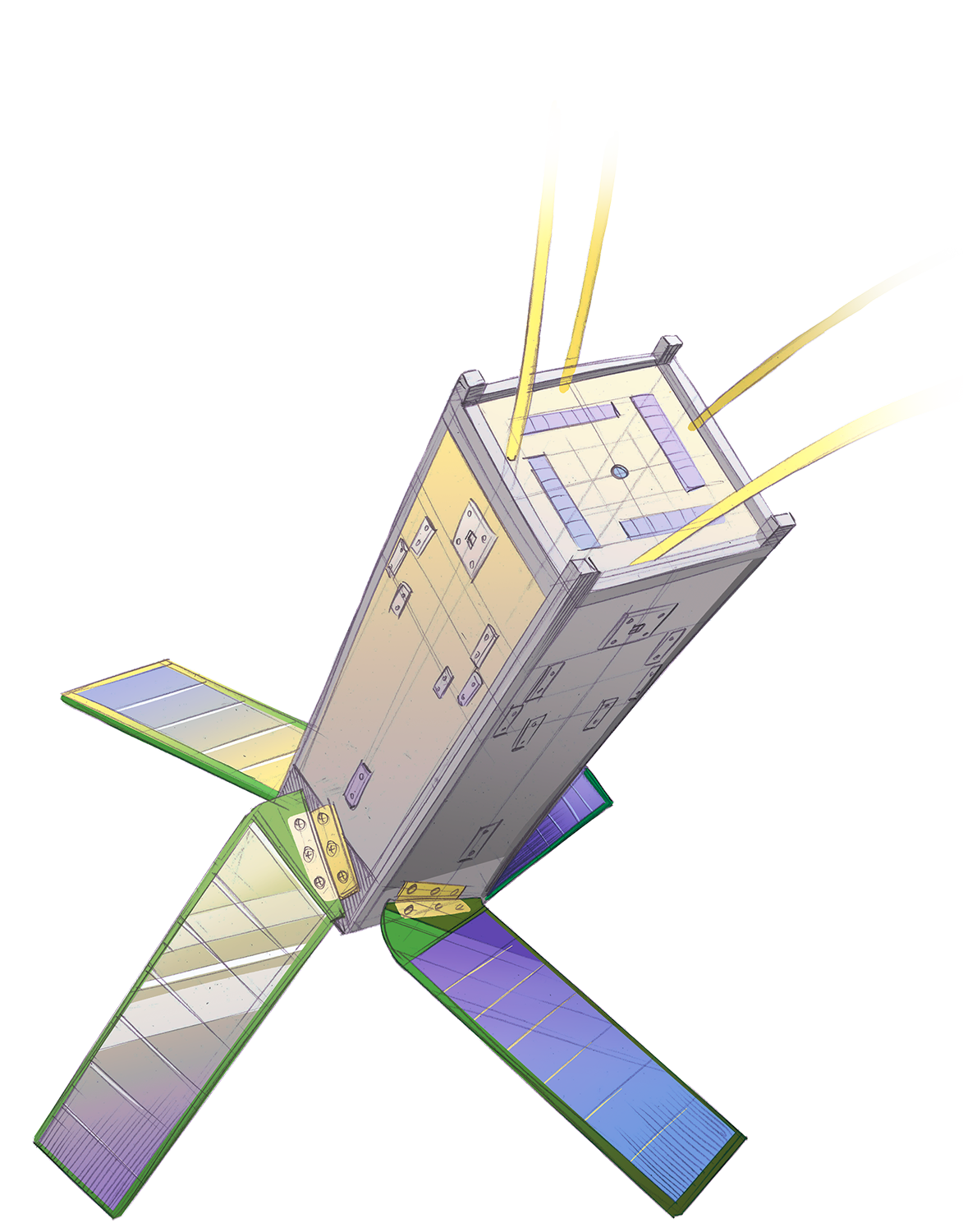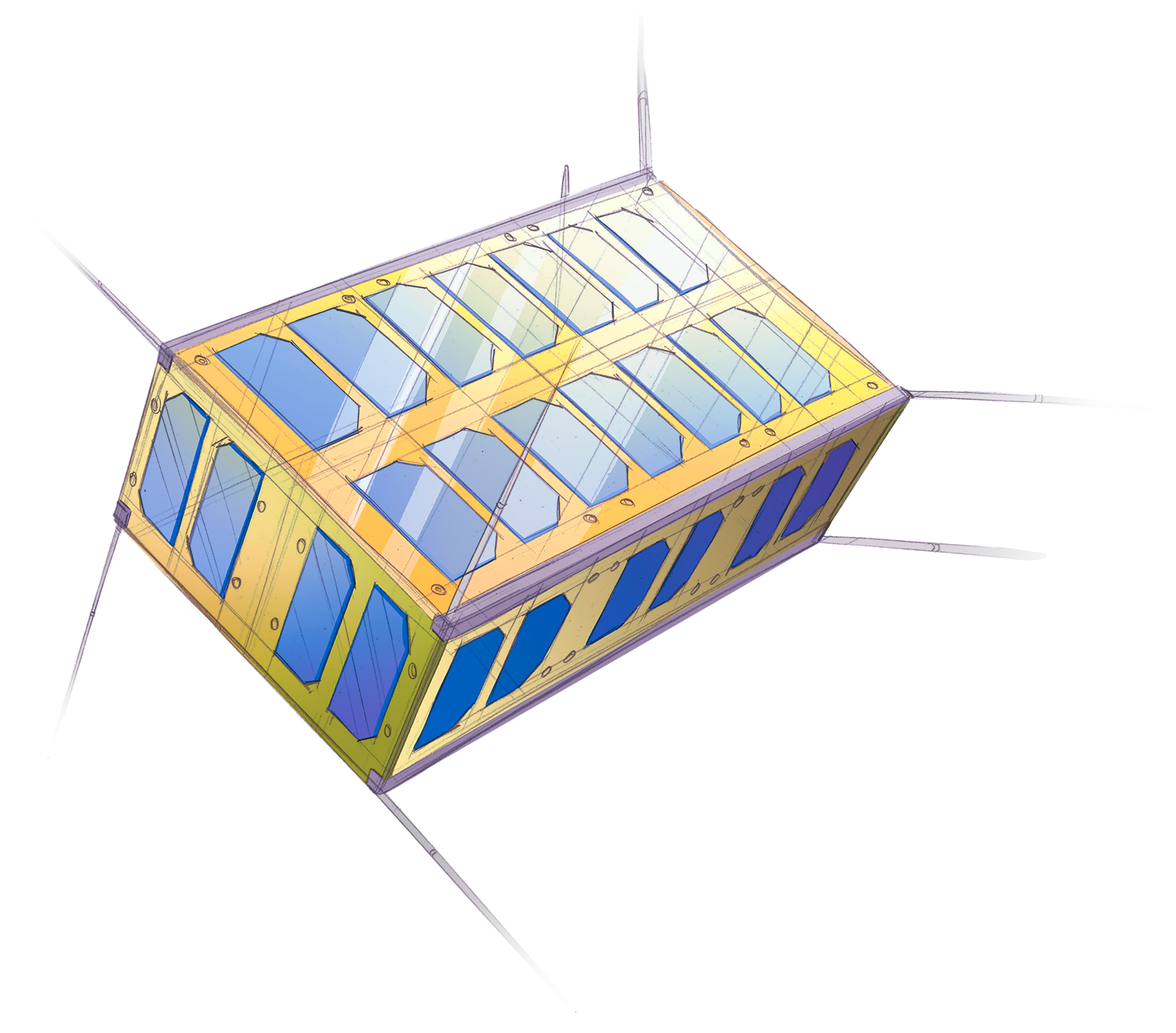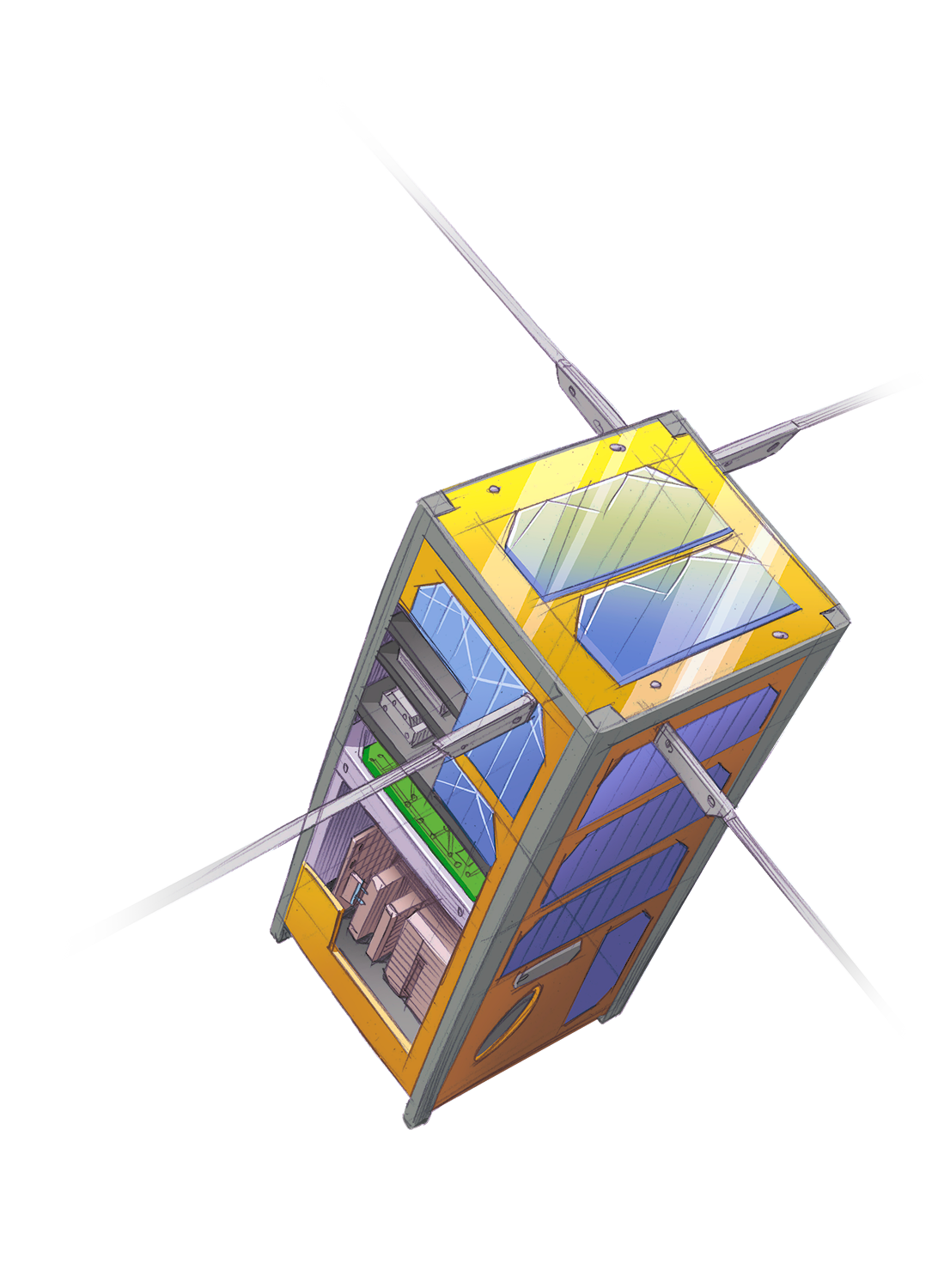Delft in space
If all goes well, two new TU Delft satellites will be launched into space this year. Time for Delft Outlook to take a retrospective of all five of the university’s satellites.
Delfi C3
Launch: 28 April 2008 | 34x10x10 cm | 2.2 kg | 2.4 Watt | still active
The first TU Delft nanosatellite was composed of circuit boards built into three cubic modules (CubeSat) with 10-centimetre ribs. The project was the result of intensive collaboration between EEMCS and AE with engineers Chris Verhoeven and Rob Hamann as project leaders. On board are two wireless solar sensors by TNO, four sets of thin-film solar cells by Dutch Space (now Airbus Defence and Space Netherlands bv) and an advanced communication unit. There is no battery (to avoid expected issues). Interesting fact: the antennas are made from tape from a metal tape measure.
Delfi n3Xt
Launch: 21 November 2013 | 34x10x10 cm 2.8 kg | 5 Watt | back to life
The main difference between Delft-n3Xt and its predecessor Delfi-C3 is the active position control. Whereas Delfi-C3 is a ‘free-falling’ design, Delfi-n3Xt uses a system of sensors and actuators to control its position and point an antenna to the ground station for fast data communication. Delfi-n3Xt has a micro-propulsion system produced by TNO and small rod-shaped electromagnets called magneto-torquers that allow it to cling, as it were, to the field lines of the Earth’s magnetic field. After a seven-year radio silence, Delfi-n3XT came back to life last February.
BRIK II
Launch: June 2021 from under an aircraft by Virgin Orbit | 30x20x10 cm | < 10 kg
To be quite clear: BRIK-II was not built by TU Delft. But it is a Delft achievement in the sense that the Delft-based CubeSat specialist ISISpace designed and built it for the Dutch Air Force and is also responsible for the launch. The payload includes a scintillation monitor that measures plasma conductivity, a source of GPS interference, at 550 km altitude. The Ministry of Defence developed a kind of ‘space mailbox’ on which messages can be left. Finally, NLR developed a directional receiver for determining the position of military systems.
Da Vinci satelliet
Launch: spring 2022 | 20x10x10 cm | 2.5 kg
Helped by the Space Systems Engineering research group, students of AE’s VSV ‘Leonardo Da Vinci’ study association designed a satellite to mark the occasion of their 75th anniversary. They designed the satellite for educational use. Primary school children can experiment with a dice machine with floating dice made by the Leiden School of Instrument Makers. Secondary school pupils can see how a sent file is damaged when the memory card is hit by radiation at an altitude of 500 km. The students won a prize of €15 thousand from the Delft University Fund and have started a crowd funding campaign to finance the launch next spring.
Delfi PQ
Launch: spring 2021 | 17x5x5 cm | 0.6 kg | 1 Watt
The Pocket Cube (PQ) is the superlative among nanosatellites. It has even less mass and power, but still has various experiments on board, explains Dr Stefano Speretta, who runs the project together with Dr Alessandra Menicucci. The Delfi PQ uses accelerometers and three mutually perpendicular electromagnets for active position control. Laser reflectors on board allow the distance from Earth to be determined to an accuracy of 3 cm, which is useful for calibrating radar measurements. The next step is to build a swarm of satellites that together provide greater coverage and capabilities than are possible with separate CubeSats.




